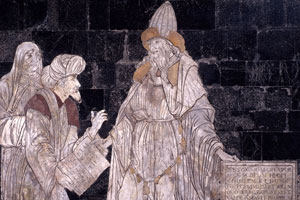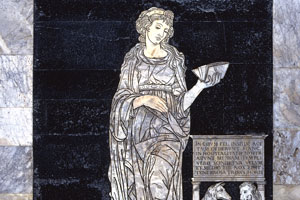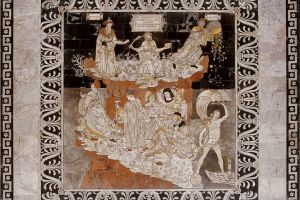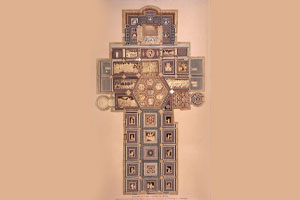The Cathedral of Santa Maria Assunta
Pavement
The marble pavement of the cathedral is an extraordinary work, one of a kind: no other large church in Christendom can boast an artistic creation comparable to this in terms of its complexity of composition and quality of execution. In accordance with the medieval view that every large church was a place for entering into knowledge, even the part of the cathedral destined to be walked on was utilized to give shape to a ‘journey through images’ that, starting from the times before Christ was born, leads the faithful to the Revelation. Despite the fact that it was begun in the second half of the fourteenth century and finished almost two centuries later, the pavement manifests a unified, organic conception. Some of the greatest artists born or working in Siena took part in its realization: Domenico di Niccolò dei Cori, Domenico di Bartolo, Matteo di Giovanni, Neroccio di Bartolomeo, Pinturicchio, Domenico Beccafumi, and others. They furnished the preparatory drawings for the fifty-six inlays that make it up, translated by master stonecutters using the techniques of marble inlay and graffito. The pavement has been subjected over the centuries to numerous restorations, and parts have been remade, operations necessary because of the wear and tear to which it is constantly subjected by its very nature. Precisely in order to preserve it from wear, the decision has been made to . . .








